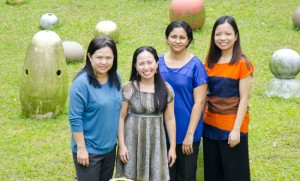Why Singapore’s English Teachers Should Embrace Singlish, Not Fight It
Is it time for Singaporean educators to embrace Singlish as a legitimate learning tool? What the Research […]
Read More
Students of SOTA are meant to hold a creative vision that enhances the way they see the world, even as they are nurtured to be artists who are very good at practising their crafts.
There was a boy who, as a primary school pupil, was already feeling “completely disillusioned” about education.
“By all estimates, he would have been an average student in a secondary school,” says Dr Letchmi Devi Ponnusamy. “He was slowly losing confidence in his own education from the discussion we had.”
Yet, by the time he turned 18, this student was one of the high achievers in the International Baccalaureate exams. How did that happen?
In his opinion, it was the education he received at the School of the Arts (SOTA) that turned his life around. This student had previously found learning in school to be “flat” and “dimensionless”. But he began to appreciate that learning can actually be deeper and more layered in SOTA. From there on, he began to flourish in school.
“I think the key here is the richness in learning that is anchored in the arts,” explained Dr Tan Liang See, a Principal Investigator of a suite of projects by SOTA and Office of Education Research (OER) in NIE.
 “What works in SOTA is that the school has built an arts-anchored environment that encourages the development of dispositions to examine diverse perspectives, to explore and define problems, which is fertile ground for student learning. I think the key is really giving students the time to think and to manipulate ideas – in other words, focusing on the process of learning rather than the outcome of the learning.”
“What works in SOTA is that the school has built an arts-anchored environment that encourages the development of dispositions to examine diverse perspectives, to explore and define problems, which is fertile ground for student learning. I think the key is really giving students the time to think and to manipulate ideas – in other words, focusing on the process of learning rather than the outcome of the learning.”
The SOTA curriculum is designed to provide rich experiences that require students to not only focus on the product but also the process. For example, students are encouraged to enter competitions to keep them motivated and take responsibility for their own learning.
The school also showcases their students’ works to communities of practitioners to provide opportunities for students to rehearse and refine their creative product.
“Even when they do showcasing, they don’t just show the final product,” Liang See explains. Instead, they showcase the works in progress.
Students are also required to critique their own work in class. “The thought processes of students are very much valued and documented,” she added.
Another approach that SOTA strongly believes in is a “connected curriculum”, as a way of letting students forge connections between the different areas of knowledge, be it in the academics or the arts.
The educational beliefs at SOTA are rooted in the school’s aim. Contrary to popular perception, the school is not only looking to churn out painters, musicians or dancers. What they want is to imbue in their students a sense of what Myra calls a “creative vision”.
 She describes it as a gift, a different way of seeing the world around them and heightened awareness of their environment.
She describes it as a gift, a different way of seeing the world around them and heightened awareness of their environment.
She gave an example: “When you walk into a room, if you’re a SOTA student and if you’re a student from the mainstream school, you’ll see things differently, in terms of the lighting, in terms of the colour, in terms of the composition of the room and so on.”
“It’s what the arts have given them – a different level of understanding.”
Letchmi sees SOTA as a school that develops the ability to see possibilities, in addition to artistic ability.
“There’s a difference between the two,” Letchmi pointed out. “You want children to learn to appreciate and think and learn creatively.”
The school provides them with a “creative space” and “creative processes” for such exploration. And given time, “you’ll observe that the students will generate creative ideas; they’ll exhibit creative behaviours, and essentially it’ll give you a product,” says Liang See.
For the projects, the research team interviewed a diverse group of students. There was something in common among them: “They all love the school like mad – very strong love!” observes Liang See.
When asked about their learning experiences in SOTA, the interviewees were more than eager to share details.
“There’s a very deep-rooted sense of belonging,” Letchmi noted. Over the course of 6 years, the students bonded with each other and formed a community of artists.
Some of them didn’t start out with very high self-esteem as learners but the experience of being in a supportive community made a big difference.
A girl whom Letchmi had interviewed confessed that she struggled with both her art form and her academic study in SOTA. But she drew strength from the fact that she was surrounded by peers who shared the same passion for art and teachers who were willing to work with her.
Globally, people have been trying to justify the need for an arts education, says Liang See. In the case of SOTA, the research team has found evidence that learning in an arts-anchored school has enriched students’ lives and made them even more passionate about the arts.
As Myra puts it, “Art is not just what they do. It’s part of who they are.”